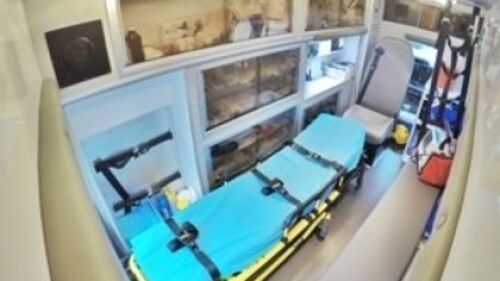By Juan A. Lozano and Mark Vancleave
Associated Press
HOUSTON — The return of soaring heat in Houston on Tuesday deepened the misery for millions of people still without power after Hurricane Beryl crashed into Texas and left residents in search of places to cool off and fuel up as the extended outages strained one of the nation’s largest cities.
Frustration mounted that Houston appeared to buckle under a storm less powerful than previous ones. State officials faced questions over whether Houston’s power utility had sufficiently prepared, including one who said he would withhold judgment until after the lights are back on.
Hospitals also started to feel the pinch: Nearly 36 hours after Beryl made landfall, Texas’ lieutenant governor said a sports and event complex would be used to temporarily hold up to 250 patients who are awaiting discharge but cannot be released to homes with no power.
People coped as best they could.
“We can handle it, but not the kids,” said Walter Perez, 49, as he arrived early Tuesday at celebrity pastor Joel Osteen’s megachurch in Houston, which served as a cooling center and distributed 40-bottle packs of water.
Perez said his family — including his wife, a 3-year-old son, a 3-week-old daughter, and his father-in-law — retreated from their apartment after a night he described as “bad, bad, bad, bad.”
Highs in Houston on Tuesday climbed back into the 90s (above 32.2 Celsius) and humidity that could make it feel even hotter. The National Weather Service described the conditions as potentially dangerous given the lack of power and air conditioning.
Beryl, which made landfall early Monday as a Category 1 hurricane, has been blamed for at least seven U.S. deaths — one in Louisiana and six in Texas — and at least 11 in the Caribbean.
Nearly 2 million homes and businesses around Houston lacked electricity Tuesday, down from a peak of over 2.7 million on Monday, according to PowerOutage.us. For many, it was a miserable repeat after storms in May killed eight people and left nearly 1 million without power amid flooded streets.
Food spoiled in listless refrigerators in neighborhoods that pined for air conditioning. Long lines of cars and people queued up at any fast food restaurant, food truck or gas station that had power and was open.
Patrons lined up on one block to eat at KFC, Jack in the Box or Denny’s — or just to get a few minutes in some cooler air. Dwight Yell, 54, had power at his house but took a disabled neighbor, who did not, to Denny’s for some food.
He complained that city and state officials did not alert residents well enough to a storm initially projected to land much farther down the coast: “They didn’t give us enough warning, where maybe we could go get gas or prepare to go out of town if the lights go out.”
Robin Taylor, who got takeout from Denny’s, was getting tired of the same old struggle. She has been living in a hotel since her home was damaged by the storms in May. When Beryl hit, her hotel room flooded.
She was angry that Houston didn’t appear prepared to handle the Category 1 storm after it had weathered much stronger ones in the past.
“No WiFi, no power, and it’s hot outside. That’s dangerous for people. That’s really the big issue,” Taylor said. “People will die in this heat in their homes.”
Nim Kidd, head of the state’s division of emergency management, emphasized that restoring power was the top priority. CenterPoint Energy in Houston has said it aims to restore power to 1 million customers by the end of Wednesday.
But for others, getting the lights back could take several more days or longer. Texas Lt. Gov. Dan Patrick, who is serving as acting governor while Gov. Greg Abbott is overseas, said nursing homes and assisted living centers were the highest priority. Sixteen hospitals were running on generator power Tuesday morning, according to the Federal Emergency Management Agency.
Patrick urged utilities to restore power quickly and said he would evaluate later whether they did enough before the storm.
An executive for CenterPoint Energy, which covers much of the Houston area, defended the utility’s preparation and response.
“From my perspective to have a storm pass at 3 p.m. in the afternoon, have those crews come in in the late evening, and have everything ready by 5 a.m. to go out and get out and start the workforce is rather impressive because we’re talking about thousands of crews,” Brad Tutunjian, vice president of regulatory policy with CenterPoint Energy, said at a media briefing on Tuesday.
Kyuta Allen brought her family to a Houston community center to cool down and use the internet for work and the night classes she takes online.
“During the day you can have the doors open but at night you’ve got to board up and lock up – lock yourself like into a sauna,” she said.
Louisiana Gov. Jeff Landry issued a state of emergency Tuesday afternoon for part of that state after trees were knocked down, homes were damaged and thousands lost power.
When Beryl made landfall, it was far less powerful than the Category 5 behemoth that tore a deadly path through parts of Mexico and the Caribbean.
Beryl was the earliest storm to develop into a Category 5 in the Atlantic. In Jamaica, officials said Monday that island residents will have to contend with food shortages after Beryl destroyed over $6.4 million in crops and supporting infrastructure.
















